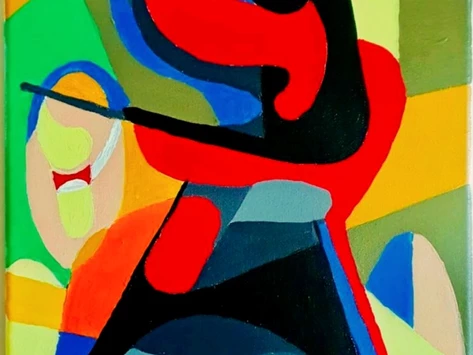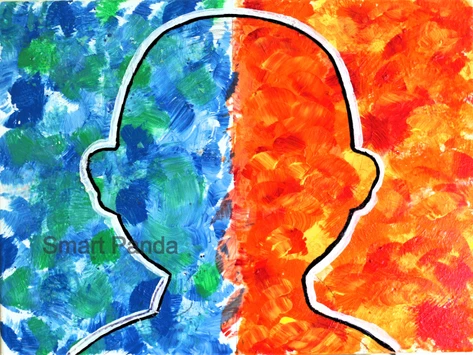I hope you found “Beginners guide to painting - Lesson 01” interesting. If you have not read it yet, here is the link: https://www.smartpanda.ai/post/beginners-guide-to-painting-lesson-01
We often hear that when it comes to art, it is important to experiment. Personally speaking, I think that it is much more satisfying and productive to experiment with guidance. I have experimented with different markers, pens, and paints. But it would have made a great difference if I had a little guidance from someone experienced.

(Photo by Marko Blazevic from Pexels)
“What are the benefits of guidance?” you may ask. Take for example that you want to buy art supplies. In this case, you would want to get the best value for your money. Everyone wants to make the smartest choices. But what if you are not familiar with the materials you need?
The knowledge that comes from our own experience, is the best teacher. So, it is worthwhile to experiment with a large assortment to find out what works best for you. However, before you start experimenting, it will be helpful to know a little about the ‘surface’ we draw and paint on– paper, canvas, or panels. Because, just like different techniques and quality of paint, the surface contributes to the final painting too. This guide will help you make informed decisions about just that.
Paper
Paper is the most common and popular surface for artists to work on. To keep the cost under budget you could start with paper. This will also help you invest in the right tools, such as charcoal, graphite, inks, pastels or paint, brushes, pens, or markers.
The word paper comes from papyrus, the name of the plant whose fibers the ancient Egyptians used to create a writing surface. Paper is made of plant fibers. Mostly cotton or wood, but other fibers like rice, straw, flax, and hemp are also used to make paper. All-natural materials are subject to decay over time, which is an important consideration for the artist. Light, heat, humidity, and pollutants- all contribute to this process. When trying to find a paper that will stand the test of time, check for the words: cotton rag, alpha-cellulose, or lignin-free.
Handmade paper is made with great techniques and skills. First, a pulp of cotton (or any other fibers) with water is churned. Then a wooden frame with a fine screen (called a deckle) collects this pulp from the vat. When the water runs off, the sheet of pulp is pressed between layers of felt to remove excess water. It is then dried. Based on the requirement, it may be further processed by running through rollers for a smoother finish. The unique feature of the handmade paper is its uneven edges.
Machine-made paper is produced on the fourdrinier machine or a cylinder mold machine. In the fourdrinier machine, the wood fiber and water pulp are processed through a series of conveyor belts and rollers. Big rolls of papers are produced to be processed further to give it the desired surface, color, and size. A cylinder mold machine works in a similar way; the resulting papers are described as “mold-made.” The surface quality is usually determined by the screens used. Many papers have a laid finish, formed by the fine pattern of the wire screen. The thickness of the paper is determined in the manufacturing process and indicated by its weight. Machine-made paper is smoother, more uniform, and sometimes less costly than handmade paper.
Types of Paper:
-
Wood-based paper- This cost-effective art paper is suitable for learning and practice work with dry media.
-
Cotton rag-based paper- This high-quality paper is suitable for dry media, water media (when sizing is added), or acrylic and oil (when heavy and primed).
-
Coated papers- This ground-coated, velour, and sanded papers provide more tooth and grab the filaments of dry media like pastel.
-
Watercolor Paper- This paper works best when saturated by soaking it for several minutes in cool water.
Canvas
Masters have used canvas for their traditional and time-honored paintings. Artists paint on stretched canvas using paints ground in flaxseed oil for hundreds of years. Stretched canvas is lightweight, thus portable, and comparatively inexpensive. They are made with the help of stretcher bars and staples.

(Photo by Roman Koval from Pexels)
Artist’s canvas is made from cotton or linen. It is sold primed or unprimed and comes in rolls, pre-stretched, or mounted on panels. Cotton canvas, sometimes called cotton-duck, is comparatively cost-effective than linen. Linen is made from the flax plant, the same source as linseed oil. Canvas comes in rolls of different sorts of width and weights.
Raw, untreated canvas must not come directly in touch with paint, which causes the material to rot. Traditionally, the canvas was seized with glue made up of rabbit skin and primed with lead-based paint. Now artists can prefer to stretch raw canvas and prime it with several coats of acrylic gesso or use canvas prepared with an acrylic or oil primer.
Stretching a canvas properly is often an exacting process but not a difficult one. The more you practice, the better you get with it. However, pre-stretched canvases are available in a good number of sizes, thicknesses, and textures, ranging in quality. As is usually true with art materials, you get what you buy. For good quality pre-stretched canvases at an affordable price, look for 7-ounce cotton primed with acid-free gesso and back-stapled on solid wood stretcher bars. For the next step up, look for linen double-primed and back-stapled on heavy, kiln-dried bars.
Priming Canvas: Acrylic gesso is the right base for acrylic, pastel, and gouache. True gesso is suitable for egg tempera and oil. If you employ an oil-based ground, confirm the canvas has been sized with gelatin or glue.
Panels
A preferable alternative to a stretched canvas is panels. Panels provide a more rigid, and stable surface. They are a good substitute as they are not subject to crackings, which are possible on stretched canvases. Panels are made out of solid wood like maple and birch, or out of plywood, medium-density fiberboard, or acid-free hardboard. Buying panels that hold gently and protectively on a wooden frame will provide extra support.
Panels are available unprimed or pre-primed. Unprimed panels are often prepared with several light coats of acrylic gesso, applied in alternating directions. Better yet, use a gesso specifically formulated to be used on panels, like Art Boards acrylic panel gesso.

There are also panels available with canvas or watercolor paper mounted on the surface. Canvas panels with cheap canvas glued to cardboard are neither permanent nor warp-resistant. But these are suitable for practice. Most pre-stretched canvases, canvas panels, or artist’s boards have a medium texture. Adding extra layers of gesso, and lightly sanding between coats produces a smoother surface, which is conducive for portrait work.
Types of panels:
-
Wood panels- The maple panel primed with many coats of acrylic gesso provides a perfect surface suitable for finely detailed work.
-
Clay board panels- They are rigid hardboard coated with fine kaolin clay. These produce either a textured or a smooth surface.
-
Art Board panels- They are acrylic-primed panels suitable for painting with oil or acrylic.
Trust me! the satisfaction you get from your art is going to be greater when you use the proper surface. Keep in mind that the majority of forms of drawings and paintings work on most surfaces. And experimenting with these surfaces is often both creative and instructive.
Wishing you happy learning!




















